I am finishing up this Heritage piece for the Communicator the day before Thanksgiving. This is particularly fitting as I am so very...THANKFUL...for finally locating two collections of our MBAA district histories. One was published for our 75th Diamond Jubilee in 1962, and the second was published for our 100th Golden Jubilee in 1987. I have written about these publications before, and I promised to share each district history with our MBAA membership in these pages. With this December 2014 issue of the Communicator, I am...THANKFUL...to begin fulfilling that promise. I am excited to share the Diamond and Golden Jubilee histories celebrating District Northern California.
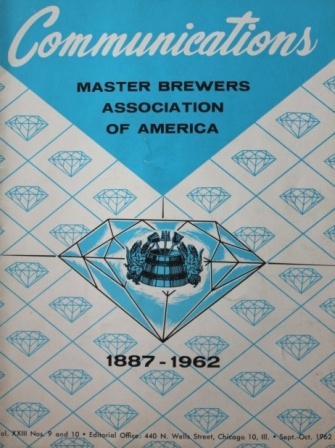
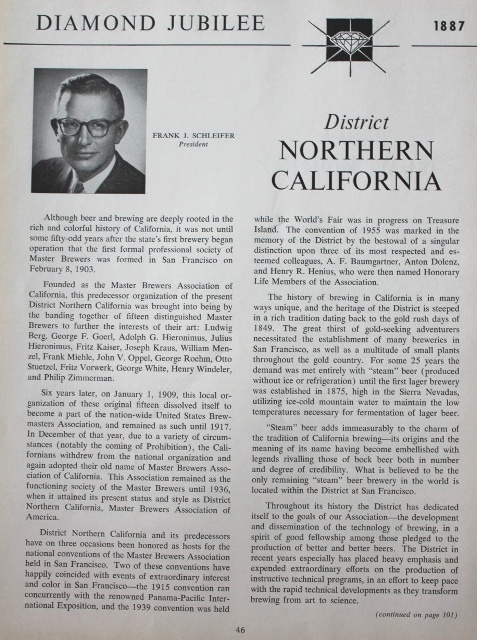
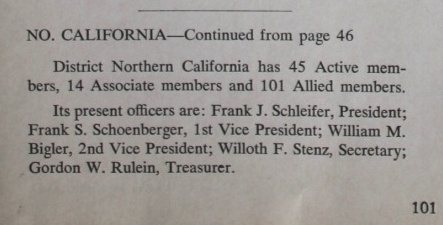
Click on the document to read the full-size version.
The 1962 Communications Diamond Jubilee celebration publication piece was written by District President Frank J. Schleifer. He shares the story of the founding of the District Northern California. He points out that his district's heritage is steeped in a rich California brewing tradition that includes the 1849 "Gold Rush" and the famous "steam beer." He is proud that District Northern California has hosted three annual conventions.
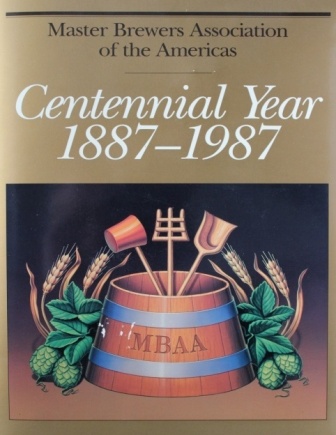
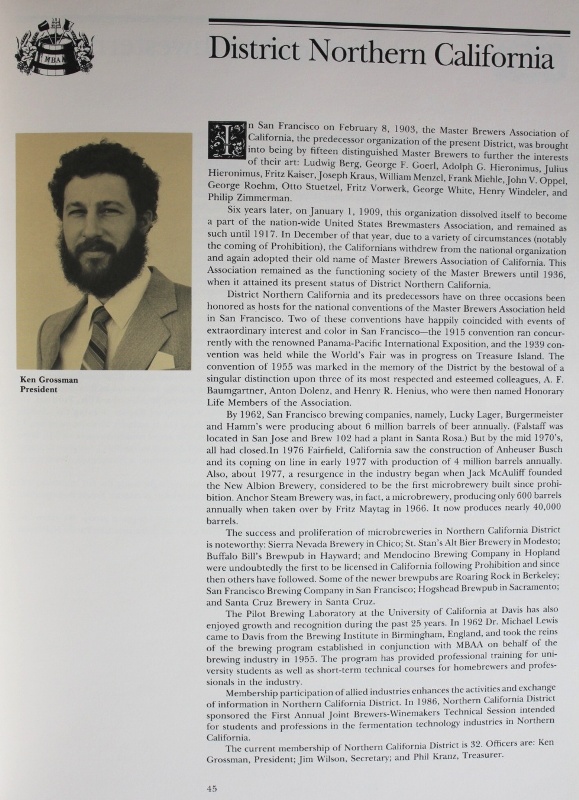
Click on the document to read the full-size version.
The 1987 Golden Jubilee celebration publication was written by District President Ken Grossman. Ken recounts the original 1962 history. He updates it by celebrating the noteworthy success and proliferation of microbreweries in northern California. He mentions several brewers and breweries by name including (fittingly) the "Sierra Nevada Brewery in Chico." Ken also updates readers on the growth and recognition of the Pilot Brewing Laboratory at UC Davis.
If District Northern California didn't have these unique documents of their heritage before, it does now. I have certainly learned how elusive and downright unavailable they have become after their publications 52 and 27 years ago, respectively. But we now have both And sharing them with our readership once again showcases the value of “digital” to all of our districts in matters of history and heritage.
